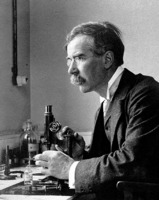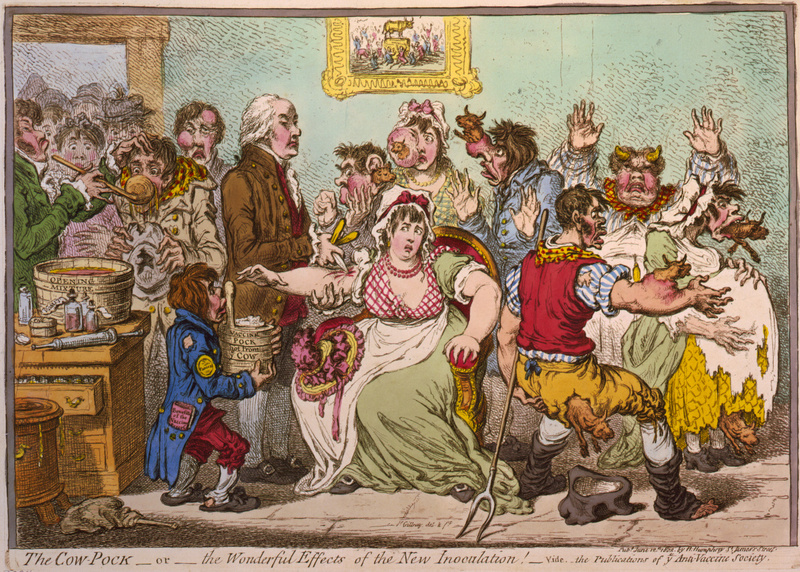Smallpox, Typhoid, and Cholera
CHOLERA
For much of the early 19th century, the idea of miasma as the root of disease was strongly held. Polluted, dirty air, especially in cities, was commonly attributed to the spread of Cholera. As such, remedies were ineffective against the disease. However, John Snow’s 1854 observation of the Broad Street pump, linked visitors of the pump to Cholera outbreaks. This observation reflected one of the first connections between Cholera and water contaminants, representing one of the first breaks away from the dominating Miasma theory, as well as a major breakthrough in public health. Unfortunately, Snow’s theory was dismissed at first. But over the next few years, new advancements added credibility to his theory, leading to its eventual acceptance, and new innovations. These include:
- 1860: The invention of germ theory by Pasteur through his studies of wine and fermentation
- 1884: Robert Koch discovery of the relationship between waste bacteria and Cholera
- 1872: Pasteur, inspired by Koch’s bacterial studies, would further his bacterial and infectious disease study, coming up with the first Cholera vaccine in 1872 for Chicken cholera, which was then introduced by Jaime Ferran to a wide human population in 1885.
Therefore, the 19th century saw the first understandings of bacteria’s role in infectious diseases to the vaccine and treatment in the later part of the century
TYPHOID
In 1836, an American doctor was the first to determine a difference between the diseases of Typhoid and Typhus, which had previously been viewed as one singular affliction and which was also not believed to be contagious. This study in itself was a breakthrough, giving space for isolated study and treatment. It was within this context that British scientist Edward Ballard also made a scientific breakthrough in the study of Typhoid and epidemiology during the 1870s. Scientific inquiry led Ballard to discover a connection between milk and typhoid outbreaks. The particular outbreak under scrutiny was shocking because it was primarily targeting the upper class, which challenged the connection between poverty and disease. Ballard’s milk connection explained this phenomenon, as the practice of drinking fresh milk was something, at the time, reserved mainly for the middle to upper class. Ballard’s study even explained the habit of women catching typhoid more commonly, as drinking milk was also a normally gendered practice. Further investigation found that the responsible dairy rested upon a contaminated water supply. The investigation was key to understanding disease transmission and strengthened a case by Ballard to identify local sites of transmission. The increased popularity of bacteriology and study of typhoid was integral to the foundation of a vaccine in 1896. Like Cholera, the Victorian Era witnessed the beginning of understanding of a disease and the creation of a vaccine.
SMALLPOX
Smallpox vaccination was not a new development, having been invented in the last 4 years of the 18th century (though the bacterial understanding of vaccinations and diseases would not come until the Victorian era). However, the Victorian era saw a breakthrough in the influence of science on the state. The 1850s saw, for the first time, mandatory vaccination laws to treat smallpox. The Vaccination Act of 1853 required babies to be vaccinated against the disease This law was met with immense backlash, reflecting one of the first anti-vaccination movements. Part of this was due to popular fears of the smallpox vaccine, as it was retrieved from bovine with cowpox.
SOURCES
Ball, Laura. “Cholera and the Pump on Broad Street: The Life and Legacy of John Snow.” The History Teacher 43, no. 1 (2009): 105–19. http://www.jstor.org/stable/40543358.
Dieter H. M. Gröschel, and Richard B. Hornick. “Who Introduced Typhoid Vaccination: Almroth Wright or Richard Pfeiffer?” Reviews of Infectious Diseases 3, no. 6 (1981): 1251–54. http://www.jstor.org/stable/4452672.
Hays, J. N. “The Scientific View of Disease and the Triumph of Professional Medicine.” In The Burdens of Disease: Epidemics and Human Response in Western History, REV-Revised., 214–42. Rutgers University Press, 2009. http://www.jstor.org/stable/j.ctt1bmznzq.15.
Howard-Jones, Norman. “Robert Koch And The Cholera Vibrio: A Centenary.” British Medical Journal (Clinical Research Edition) 288, no. 6414 (1984): 379–81. http://www.jstor.org/stable/29513933.
Millward, Gareth. “Smallpox.” Vaccinating Britain: Mass vaccination and the public since the Second World War [Internet]., January 1, 1970. https://www.ncbi.nlm.nih.gov/books/NBK545998/.
WILLIAMS, JACOB STEERE. “The Perfect Food and the Filth Disease: Milk-Borne Typhoid and Epidemiological Practice in Late Victorian Britain.” Journal of the History of Medicine and Allied Sciences 65, no. 4 (2010): 514–45. http://www.jstor.org/stable/24631805.




